How the Vestibular System Affects Your Child’s Behavior: A Guide For Parents & Educators
Affiliate and Referral links are used below to promote products I love and recommend. I receive a commission on any purchases made through these links. Please see my disclosure policy for more details. As an Amazon Associate, I earn from qualifying purchases.
We are back with another post in the Is it Behavior? Or is it Sensory? series. The vestibular system influences a child’s behavior and sense of balance. Learn more about how the vestibular system affects a child’s behavior below.
Post last updated March 2023.
The Vestibular System – Table of contents
- What is the Vestibular System?
- What is the vestibular sense and where is it located?
- How does the Vestibular System Affect Children's Behaviors?
- Be Careful Introducing New Vestibular Input
- Activities for the Vestibular Input
- Sensory Processing Explained: A Handbook for Parents & Educators
- Behavior vs. Sensory Series
What is the Vestibular System?
The word vestibular tends to throw some people off. If you have never heard of the word before, you are probably wondering what in the world it is and how it affects behavior.
There are 5 main senses that we typically hear about:
- Visual/Eyes
- Auditory/Sound
- Tactile/Touch
- Taste
- Smell/Olfactory
People often joke about someone having a 6th sense, but honestly, we ALL have a 6 sense. It is called the Vestibular System and it starts in the middle and inner ear.
What is the vestibular sense and where is it located?
The vestibular system equals a sense of balance and movement.
I promise I am not going to get all scientific on you. I just want to give you a visual of what I am talking about. As you can see above, the vestibular system includes the middle ear and inner ear. Here are some facts about the vestibular system:
- It is the first system to develop in utero
- It is the first to have an organized response to sensory input
- It is the most protected area of the brain
- It has a very close relationship to gravity, safety, survival, arousal, and attention
Do you see what I highlighted in bold there? That is how the vestibular system relates to your child's behavior. But more about that in a minute.
You can check out this really cool mini-course on the Vestibular Sense, by Lumen Learning for more information.
How does the Vestibular System Affect Children's Behaviors?
Information from the eyes, ears and vestibular system (balance & movement) combine to give an awareness of yourself in relation to the space around you. So your eyes tell you where you are in the room, your ears tell you what is going on in the room, and the vestibular system recognizes if your body is standing still, moving, if it is balanced, etc.
All of this information is then filtered through your brain and then your brain provides a response. This affects your arousal, motor, and language responses.
When someone has a fairly “normal” or well-developed vestibular system, all of this information is categorized appropriately and the appropriate response is given. It has been said that Olympic athletes or people who are constantly moving and putting their bodies or senses through new experiences have the best-developed vestibular systems.
Here is the problem…. kids do not move or experience things like they use to. Many experiences that helped children to build strong vestibular systems are not happening.
If your child is in school, their recess and free time to move and explore has been cut down to a bare minimum. Then they come home and go straight to the tv, video games, movies, etc, or homework. They are not outside and moving like kids 100 years ago were.
Here are just a few things that are important to building a strong vestibular system:
- Rolling
- Crawling
- Tummy time or stomach time
- Climbing
- Jumping
- Swinging (upright, upside down, side to side, spinning)
- Basically moving and putting their bodies, in particular, their head in as many different positions or movements as possible
Remember when I said this?
It (the vestibular system) has a very close relationship to gravity, safety, survival, arousal, and attention.
When your child has an underdeveloped vestibular system, their brain is not getting the correct information from their eyes, ears, sense of gravity, or movement in their bodies. This, in turn, makes their brain and body feel unsafe. When they do not feel safe, their arousal level, attention, and survival mode responses kick in.
This leads to a fight-or-flight response in the body. This is the reaction their body has when it does not feel safe. And if their vestibular system is telling them a situation is not safe, they are going to react to it in this fight or flight response.
Every child has a different thresh-hold or limit of what their vestibular system can handle. Well, really everyone does, even you!
Some may have a low thresh-hold, which means any slightest movement or situation could send their vestibular system into fight or flight responses.
Others have a very high thresh-hold, which means it takes more input to their brain for the vestibular system to recognize it.
Here are some everyday life, practical examples:
- Motion sickness – Feeling sick in the car, on a boat, in a plane, or even being off the ground in a high spot, may make some people feel motion sick.
- Spinning – The slightest motion of spinning could cause one child to feel sick or throw up, while another child could spin for hours and not seem to care.
- Claustrophobia – Some may feel like the room is caving in on them with a lot of people around or they feel anxious and unsafe in small or large rooms filled with people *my husband*. Others may not be affected by this in the least and enjoy being in rooms with a lot of people and thrive.
Honestly, I could go on and on about the vestibular system. It truly fascinates me to learn about it. For the sake of today though, I will end here and give you some resources for further reading and learning.
Be Careful Introducing New Vestibular Input
As always, my little disclaimer – this information is not to take the place of medical advice from your doctor or pediatrician. If you feel your child has a sensory processing disorder or problem that is adversely affecting their quality of life, then you need to talk to your doctor and get their advice.
Also, ask for an evaluation to be done by an Occupational Therapist or Physical Therapist that specializes in sensory processing and sensory integration.
If your child has a severe reaction to a particular movement (such as spinning, swinging, or any big motor movement) stop that movement immediately. Many children who have an underdeveloped vestibular system may feel sick, throw up, feel faint, etc.
Lastly, and most importantly, if your child has a history of seizures please talk to your physician or doctor before doing any new physical movements with your child. Some movements can cause seizure activity depending on the child, so please be aware of that.
Activities for the Vestibular Input
Remember not to push your child’s vestibular system too far. At the first sign that they cannot tolerate an activity or movement, please stop the activity. You can read more about sensory overload here.
- The Best Activities for Vestibular Input – I give you the best ways to start introducing and encouraging vestibular input in this post.
- Obstacle Course Relay Race with a Scooter Board (also winter-themed scooter board activity here and fall-themed here)
- The Best Toys for Vestibular Development – The Inspired Treehouse
- Stacking Plastic Cups on a Scooter Board & Crashing Activity – Starfish Therapies
- 45 Essential Vestibular Activities and Input Ideas – Your Kids Table
Sensory Processing Explained: A Handbook for Parents & Educators
Sensory Processing Explained: A Handbook for Parents and Educators was written by myself and my good friend Sharla. We used our combined knowledge, me as a Certified Occupational Therapy Assistant and her as a mom of 7, 5 of whom have sensory processing difficulties, to create a handbook for parents and educators to feel confident in understanding sensory processing.
With Sensory Processing Explained, discover…
- easy-to-understand sensory information that you can share with parents and educators to help explain a child’s behavior
- how to explain sensory processing to those who just don’t get it
- what calming techniques and strategies can work during a sensory meltdown
- easy sensory ideas to replicate at home
- how teachers can accommodate kids with sensory processing challenges
- strategies and activities that can be used with an entire classroom
- information on all eight sensory systems and how they can affect behaviors (plus strategies and activities that can help with regulation)
- just figuring out where to begin if you feel a child could be struggling with sensory processing
Plus get amazing informational printables that make it easy to share about sensory processing with families, clients, or co-workers.
Behavior vs. Sensory Series
Here are all the posts that are included in this 5-day series.
- Is it Behavior? Or is it Sensory?
- The Vestibular System
- Diet & Nutrition
- Sleep & Screen Time
- Problem-Solving Discipline & Sensory Processing
Free Printable on the Vestibular System & All 8 Sensory Systems
I have a free 9-day email series all about the 8 sensory systems. You can sign up for it by entering your email address below. You'll also receive an 8-page printable, one page for each sensory system, including the vestibular system.
You'll also get my weekly newsletter with more developmental tips, tools, and strategies after you finish this free email series. You can unsubscribe at any time.
By downloading this free printable, you are agreeing with my site's terms of use and privacy policy as detailed here.
Download the Free Printable
Subscribe to GHOK and receive the free sensory system email series and 8 sensory systems printable packet as a free gift.

Heather Greutman, COTA
Heather Greutman is a Certified Occupational Therapy Assistant with experience in school-based OT services for preschool through high school. She uses her background to share child development tips, tools, and strategies for parents, educators, and therapists. She is the author of many ebooks including The Basics of Fine Motor Skills, and Basics of Pre-Writing Skills, and co-author of Sensory Processing Explained: A Handbook for Parents and Educators.
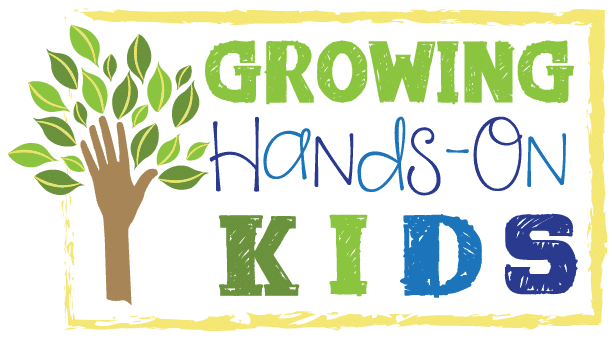
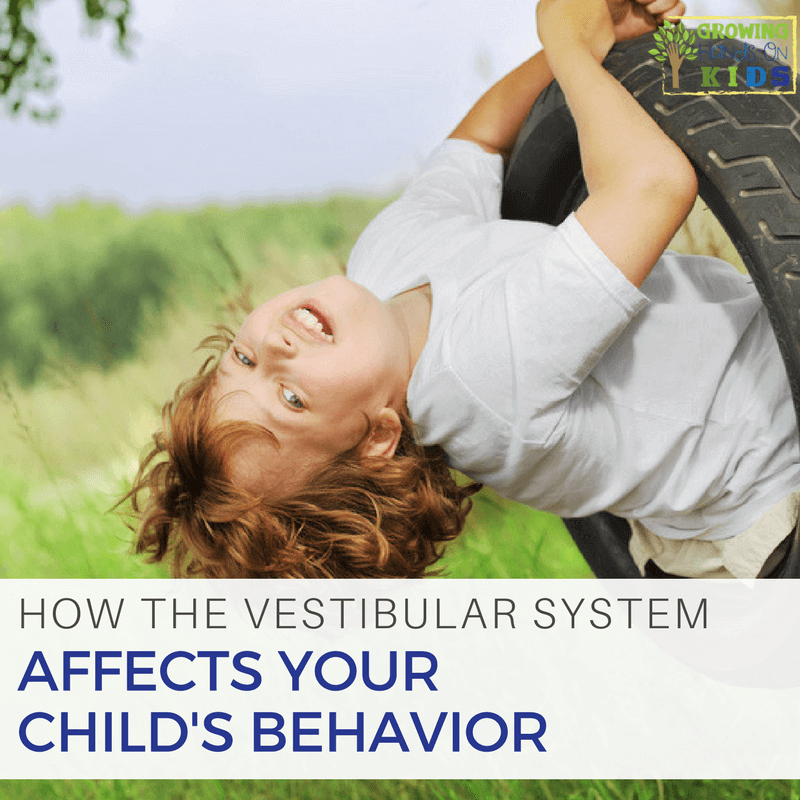
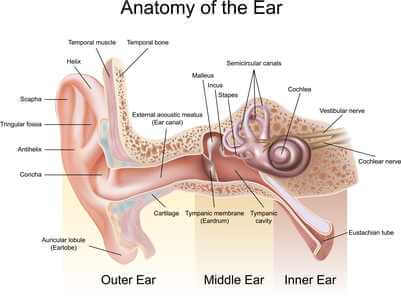
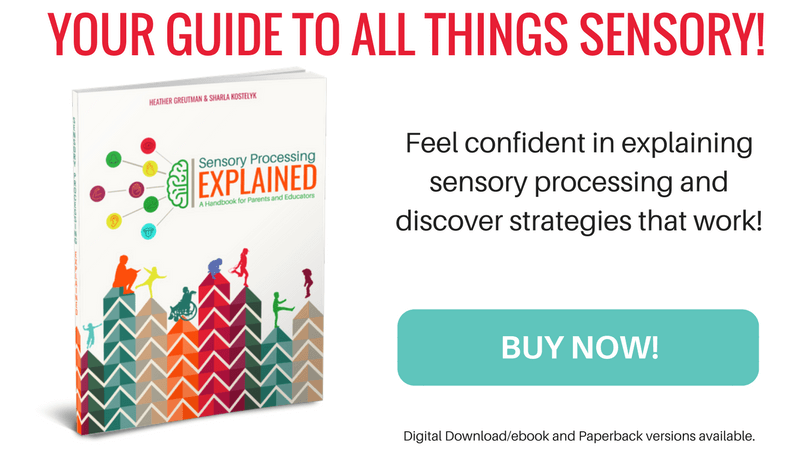
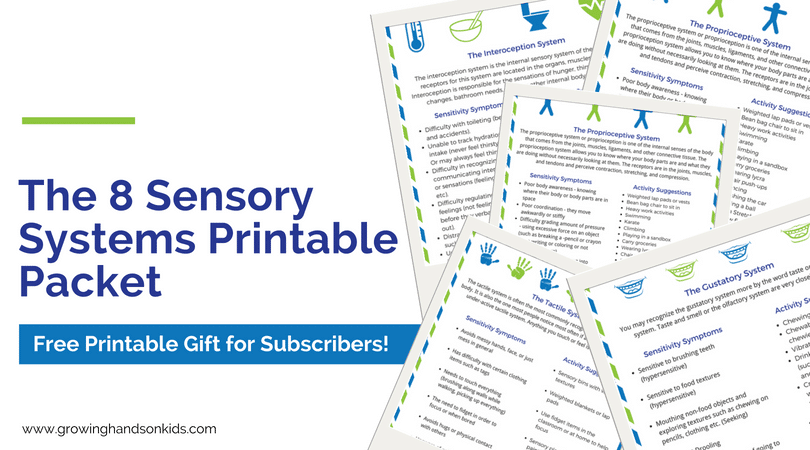
Thank you
Hi, in your article you make mention of children getting sick etc during vestibular input. My daughter likes the input. She has always been quite athletic, is constantly moving, is extremely coordinated, however she was
emotionally disregulated and always moving as if she had adhd. She was tested for adhd and does not have it, but she was diagnosed with sensory integration and a vestibular disorder. She tested at 0.1 percentile last year (vestibular) After a year of OT, she is at the 15th percentile amongst her peers.
Is it possible to seek the spinning, upsidown activities, and be extremely coordinated with a vestibular disorder?
Hi Jan,
That sounds like my daughter, who’s 8 now.
Can you tell me how she was diagnosed and who by (OT?), as I suspect my daughter has vestibular issues.
She cannot maintain focus, has great difficulty regulating emotions, difficulty reading, was diagnosed with apraxia of speech when she was 3, has always ran instead of walk, has difficulty sequencing her speech into cohesive sentences, and cognitive/academic problems.
She was treated with aminoglycosides (gentamicin) as a baby, a known vestibulartoxin.
She didn’t crawl til she was one year old, and walk til about 18 months.
She has now become much more coordinated, but so many problems remain.
Sshe too, loves upside down activities.
Do you know how your daughter’s vestibular system was damaged?
Thank you,
Stephanie
Hi, thank you for this post. I agree with others that the explanations here are clear and understandable.
I also wanted to ask how to differentiate the signs of hyperactivity of ADHD and vestibular seeking behaviors of SPD. Most articles I’ve read regarding this talked about the child’s inappropriate reactions to external stimuli, but not about the constant moving.
I’m very much willing to consult with a professional but I also wanted to educate myself as a parent.
Thank you in advance.
Our son shows behavior from all 3 cheat sheet groups. He hasn’t been diagnosed w autism yet, have 2yo checkup on Saturday. Should I be concerned? He and his sister already have therapists.
I enjoyed reading this article but I am slightly more confused – my 8 year old son does not exhibit any of the avoiding behaviors listed on the chart but he does show signs for the seeking behaviors of the vestibular system. Can anybody give me any thoughts or suggestions.
For those whose little ones are still very little…this is also why modern baby-raising practices can make such a huge difference. Babies who are carried regularly get lots of opportunity to develop this system. (Their bodies are constantly adjusting to the parent’s movements.) Babies who are placed in carseats, cribs, etc. don’t get the same vestibular development. So if your littles are still little enough to have this opportunity…carry them!
YES! Thank you so much for pointing this out.
Yikes! Another thing for me to feel guilty about. I couldn’t breastfeed and my twins hates the carriers and I went through at least 5 of them. We carried and held them a lot as babies, even now though walking.
Mubenwe didn’t start early enough? Who knows.
Greetings from Kenya & thank you so much for the post!
My son is 23 months & is on the spectrum.He is on the GFCF diet but is afraid of therapy;he begins to cry whenever we head to the therapy room & will take “flight” on seeing the therapist.His reaction worsens whenever he is placed on the therapy ball or swing or when placed upside down.Sometimes he cries to sleep while on the swing.Initially I thought he would get used to it but in vain!
Should I try a different kind of approach regarding therapy or is his reaction normal & he would eventually enjoy it?
I am so glad I have found you. My pediatrician feels our daughter has SPD. We have a ton of the common listed indicators, but the biggest one is fears of everything including falling. She also has a hard time just dealing with emotions and certain types of touch. We have irrational responses to things like slides and stairs and even to not being able to do something like closing the lid to play doh. I can name a 100 other things, but to save time I will not. It all starred when we just wouldn’t let go to walk on our own. We finally did at 2 years and 4 months. We saw a neurologist and he said he didn’t think anything was wrong with her. Now here we are. Her sister who is 20 months old is developing and in some instances passing by her sister who is 3. So now I am trying to convince my husband that this is not just a discipline or bad defiant behavior issue, but something bigger.
Great article, can you clarify how this links to proprioception and equilibrioception? Are they part of the vestibular system?
Hi Julie,
Yes, equilibrioception is the sense of balance and would be part of the vestibular system. Proprioception has to do more with the muscles and joints and the sensations felt through those areas with movement. However the vestibular system and proprioceptive system as very connected, since they both have to do with gross motor movements. Hope that helps!
I am very confused my son 9-year-old son and this sensory issue. He is very active and plays outside often. He can swing, jump, climb, spin, bounce, you name it without getting physically sick. (Although, he does get motion sickness in cars strangely enough). However, he becomes very angry and aggressive when he is outside playing and physically active. It can happen almost immediately or sometimes it takes 10-15 minutes. We always thought and were told playing outside would help him with SPD but it seems to cause horrible episodes of rage. Any ideas about this?
Thanks for posting this. It’s fascinating stuff, both on the educational level and on a personal level. As an adult with a vestibular disorder (Meniere’s Disease–sudden onset vertigo, feeling off-balance/woozy most of the time), I even see myself on that Vestibular cheat sheet–I definitely fall under Vestibular Avoiding Behaviors. Escalators and elevators are not my friends. 😉
Dr Levinson believes dyslexia is caused by vestibular imbalance. He treats it with anti motion sickness medicine and is very effective. dyslexia online. com
This is excellent information and also dramatically affects adults. Original Strength teaches people how to re-engage their vestibular system after years of under utilization.
Definitely agree that is affects adults too! I know my vestibular system is definitely not where it should be! Thanks for the comment!
Thanks for these posts. They are helping me understand things. I have a daughter with ADHD who has sensory seeking tendencies but we all are a bit clumsy in my family and this helps me understand. I have a question though. Is the general idea to give them more physical exercise practicing the different types of activities? Is there a difference for how you would approach this for a child who is sensory seeking versus one who has a low threshold for some of these activities?
Hi Sarah,
Glad this post was helpful for you. For children with a low threshold I would definitely take things slow and let them choose the activity and also when to stop it. When doing these activities with kids you want to look for signs of them being too over stimulated which includes flushed cheeks or any other type of response that is not typical for them.
This is so awesome! Sometimes when my sons OT is explaining things to me it goes over my head. This was explained perfectly! Thank you so much.
I am SO glad this was helpful for you Amy! Your comment made my evening! 🙂
This post is fascinating – and very educational for me! My daughter loves to hang upside-down on the couch, twirl sideways on the swing and things like that, while one round of Ring-Around-the-Rosie and I have to sit down from dizziness! This helped me to understand that there isn’t necessarily anything wrong with either of us – just differences. (Though I’ll never get how she can spin around so many times without getting ill! lol!)
What an excellent and thorough article on the vestibular system.
This is a great series! I really appreciate having a place to refer people that want to know about my son’s SPD. (It’s also a great refresher for me.) I didn’t see you mention that people with vestibular issues may also have difficulty distinguishing background noise from foreground noise. This seems to be a major cause for anxiety in my three year old son when we are in public. A firm hand on the shoulder, or wearing him in a “baby” carrier seem to help reign his attention back in. That’s been life changing for us, thought I’d share. Thanks again!
I’m fascinated!!! With 3 kids well on their way to growing up, we adopted my nephew a few years ago. No 1 would tell us a good history about his health during the 18 months before he came to us, but things have definitely been challenging. Now, he has been kicked out of 2 schools so far, though he is extremely intelligent and loves to learn. No 1 seems to want to try to understand him. He has been diagnosed with ADHD (he is now 5), and is undergoing treatment. This information is extremely interesting, though I haven’t figured out what to do with it (as he is screaming in the background because he wants a special dinner made for him). However, I think this is all mind blowing and amazing at the same time. Thank you so much for explaining this, and for giving me another avenue to research!
Wonderful explanation… Suddenly all my daughter’s “annoying habits” make more sense! She has always been one who needed to move. Trying to keep her in a chair at dinner time has caused more tears than done any good. Going to help her find some more acceptable ways to move.
Great post! With three kiddos diagnosed with ASD, two with ADHD also, and also another child with significant sensory needs based on her past before adoption, I’m all too familiar with vestibular needs in both ways. Thank you for taking the time to explain all of this to others in a way that’s understandable. The vestibular sense is a hard one to grasp, especially when trying to meet sensory needs. You’ve done a great job!
I’m curious about children with vestibular seeking behaviors and how that fits into sensory issues. Any further info on that?
Hi Jennifer,
Vestibular seeking behaviors are a type of sensory seeking issue.
Here is a post to a series my mother in-law wrote on sensory processing disorder and the different types of sensory issues: http://goldenreflectionsblog.com/2011/02/what-is-sensory-processing-disorder.html
My son just turned 3 and is in speech and OT. We just discovered he has massive build up of fluid on ears. The OT said this may be cause of some of his sensory seeking behavior (he never sits still and short attention span; always jumping, running and climbing. He is having surgery in 2 weeks. Once tubes are placed, will his vestibular sense return to normal and sensory seeking end?
Hi Kassi, I couldn’t say for sure that it would end his vestibular and sensory seeking behaviors, but it could definitely help. That age group tends to have a lot of vestibular sensory seeking type behaviors just because of their age. I would ask his OT what they think. It really depends on the cause of his seeking behaviors, which could be a number of things, not just one.
Kassie,
Just wondering the outcome of your son. Our son is three and had the exact same thing happen to him. His ear tubes are in and he is babbling more but still seeking sensory input.